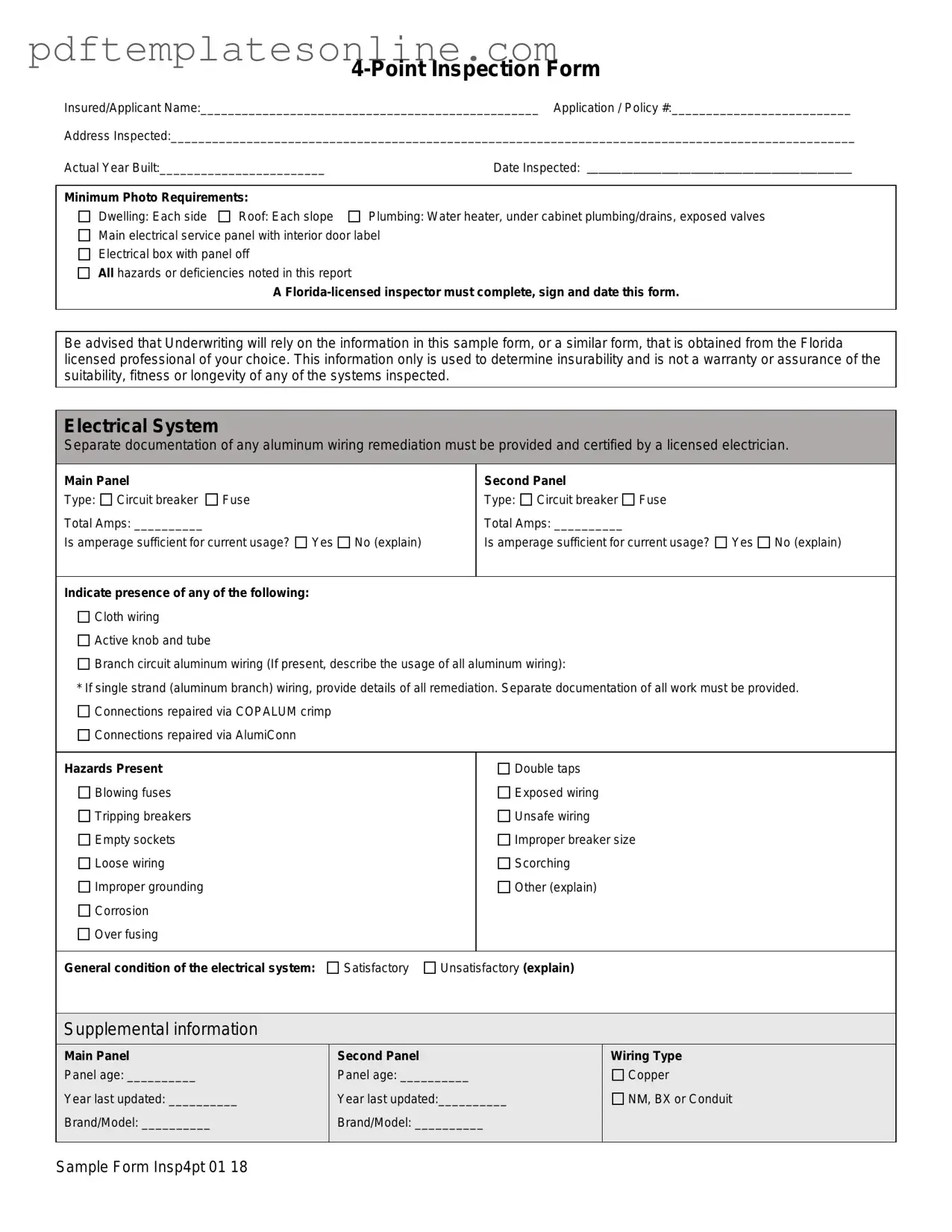Completing the 4 Point Inspection form accurately is crucial for obtaining insurance coverage. One common mistake is failing to provide the insured/applicant name and application/policy number. These identifiers are essential for linking the inspection report to the correct insurance application. Without this information, the report may not be processed, leading to delays or denials.
Another frequent error involves the actual year built of the property. Some individuals either guess or provide an incorrect year, which can affect underwriting decisions. It is vital to verify this information through reliable sources, such as property records, to ensure accuracy.
Inadequate documentation of the minimum photo requirements is also a common oversight. Each side of the dwelling, all roof slopes, and key plumbing and electrical components must be photographed. Missing photos can result in a lack of clarity regarding the property's condition, which may hinder the underwriting process.
Many people overlook the need for a licensed inspector to complete, sign, and date the form. Submitting an unsigned or undated form can invalidate the inspection. Ensure that the inspector is not only licensed but also meets the specific requirements outlined for the 4 Point Inspection.
Another mistake involves neglecting to indicate the presence of hazards in the electrical system. Failing to note issues such as double taps, exposed wiring, or improper grounding can lead to significant safety concerns. It is essential to be thorough and honest about any hazards found during the inspection.
In the HVAC system section, some individuals fail to provide details about the primary heat source or the last servicing date. This information is crucial for assessing the system's reliability. Without it, the inspector may not have a complete picture of the HVAC's condition.
When detailing the plumbing system, individuals sometimes forget to check for active leaks or prior leak indications. This oversight can lead to future problems if existing issues are not reported. Thoroughly inspect all visible plumbing fixtures and connections to appliances to ensure no signs of damage are overlooked.
Lastly, when discussing the roof, many fail to provide a complete assessment of its condition. Noting visible signs of damage or deterioration is essential for a comprehensive evaluation. If there are any concerns, they should be documented in detail to inform the underwriting process accurately.
